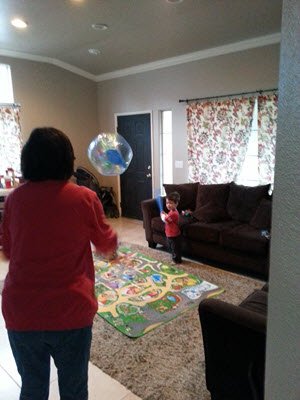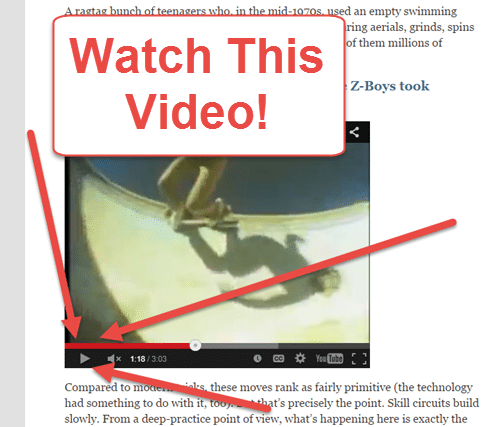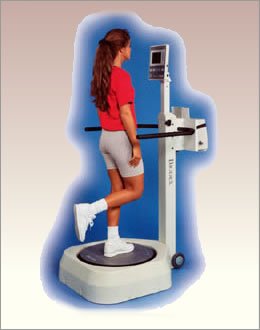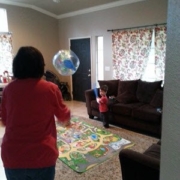Best Examples To Give Positive Constructive Feedback When Coaching Sports, Baseball, Or Softball | Intrinsic, Extrinsic, & Why High Information Is Important
Discover the best examples of how to give positive constructive feedback when coaching youth sports, baseball, and softball. Learn the difference between intrinsic and extrinsic feedback, and why giving high information feedback is important.
What Every Coach MUST Know About Giving Feedback To Hitters…

My in-laws had just come over for Easter Sunday, and we were watching my 2-year-old son Noah hit balls off his little tee in the backyard. What transpired was an ah-ha moment for me in giving feedback to hitters…
My brother-in-law was the fielder, and in between swings, my mother-in-law was feeding his tee more balls. Whenever Noah would angle to hit the ball away from my brother-in-law, my mother-in-law would come over and help Noah angle correctly, by moving his body with her hands.
It dawned on me that I’d never given him feedback like that before. I typically just tell him to “hit it that way,” and he angles his body naturally. Which is the better way? And does it matter? There’s a growing body of research and study that reveals the science of giving feedback to hitters.
First, let’s see how you’d answer the following 3 questions…
1. Do you give verbal feedback between each swing?
OR, wait till the end of a round?
2. Do you use internal cues like a focus on the feet?
OR, focus on external ones outside the feet?
3. Do you physically move the player into a better position yourself?
OR, do you allow the player to make adjustments on their own?
How’d you do? Don’t worry about being wrong…
In this post, we’re going to look at how science answers the 3 previous questions on giving feedback to hitters…
SCIENCE-BASED TRAINING:
Improve your hitting strategy dramatically by applying human movement principles.
Learn not only how and what to train but also the science behind the methods.
1. Do you give verbal feedback between each swing? OR, wait till the end of a round?

To give this section some context, check out Daniel Coyle’s post about the Z-Boys by CLICKING the image above…
Daniel Coyle, in his book The Talent Code, talks about The Language of Ignition. He shares a story from Skip Engblom, the guy who coached the Z-Boys surf/skateboarding team in the 1970’s.
Enter Coach Skip… (by the way ‘unowaime?’ is Skip-Talk for ‘you know what I mean?’):
“When it came to skateboards, we got all systematic about it, practiced a couple hours a day, four days a week. There’s no instant gratification, man. Everything boils back down to training, doing it over and over. So I never said much. I would just be mellow and say ‘good job, dude’ or ‘nice shred,’ and sometimes something to up the ante, toss in a little carrot, you know, like ‘I heard so-and-so did that trick last week.’ And then they’d all be trying like crazy to do that one, unowaime?”
…”Here’s the deal. You’ve got to give kids credit at a younger age for feeling stuff more acutely. When you say something to a kid, you’ve got to know what you’re saying to them. The stuff you say to a kid starting out — you got to be super careful, unowaime? What skill-building really is, is confidence-building. First, they got to earn it, then they got it. And once it gets lit, it stays lit pretty good.”
In giving feedback to hitters, pretend words are precious. Imagine that every word you say costs YOU money. The less words you use, the smaller your bill is at the end of a session. Make your words more impactful, more purposeful.
I wait till the end of a round (5-swings or so) to give feedback. And even then, I’m quizzing THEM on what they did or felt, NOT telling what I think. This works wonders in giving feedback to hitters that makes coaching sticky.
2. Do you use internal cues like a focus on the feet? OR, focus on external ones outside the feet?

Stabilometer, photo courtesy: hospimedicaintl.com
I found a study by Charles H. Shea & Gabriele Wulf that was published at ScienceDirect.com titled, “Enhancing Motor Learning Through External-Focus Instructions and Feedback”, that illuminates a piece of the giving feedback to hitter’s puzzle… (CLICK HERE for the study abstract):
They had four groups who practiced balancing on a Stabilometer:
- Group 1 – Focused on balancing with their feet (internal),
- Group 2 – Focused on balancing by looking at a marker on the Stabilometer (external),
- Group 3 – Concurrent feedback watching deviations from the horizontal on a computer screen and telling them the line represented their feet (feedback/internal focus), and
- Group 4 – Concurrent feedback watching deviations from the horizontal on a computer screen and telling them the line represented the markers (feedback/external focus).
Study conclusions:
- Both external focus of attention and feedback enhanced learning.
- Learning benefits of an external attentional focus seem to generalize the feedback given to the learner.
- Feedback generally enhanced performance and learning, suggesting that one function of feedback might be to promote an external focus of attention.
According to sports performance psychologist and distinguished PGA Tour mental coach, Gio Valiante, elite golfers use an external focus during tournaments by “moving towards the cup”. In other words, they aren’t focusing internally about their mechanics.
Giving feedback to hitters works in the same way…I use feedback markers when working on footwork. I urge them to “get to the markers” (external) instead of a focus on their feet (internal).
3. Do you physically move the player into a better position yourself? OR, do you allow the player to make adjustments on their own?

Great golf book on the mental process. It has nothing to do with hitting, but at the same time has everything to do with it.
In a book by Gio Valiante called Golf Flow
, he recalls a class session where he’s also a professor at Rollins College in Winter Park, Florida…
In the middle of class, that was being video recorded, he asked a female student to walk up and try her hand at sinking a putt on a 6-foot artificial turf green he had set up.
The first try was rushed, and she missed horribly beyond the cup.
The second try she took more time to line up, and the putt came up a bit short.
The third try she took a little more time, made a few mechanical adjustments, then sank the putt!
Please note that during the test, not a word was said to her.
Dr. Gio Valiante then had everyone in the class watch the video back of her whole session. He instructed the class to analyze what key adjustments she made after her misses.
The key here is that the female student made the adjustments on her own. Just like the Z-Boys skateboarding example above.
This has major implications on giving feedback to hitters…
Returning back to my mother-in-law’s reaction to Noah, when he was lining up to hit the ball off the tee…
The ah-ha moment for me was seeing Noah’s brain turn off as my mother-in-law did the dirty work of moving him into the right position. In other words, he didn’t have to think about the adjustment, and make it himself.
Based on the research of this post, this leads to a longer learning curve. So:
- Keep verbal feedback (or cues) short and punchy,
- Use external focuses (i.e. video analysis, “hit it over there!”), and
- Make sure when you’re giving feedback to hitters, that you allow for natural adjustments to be made like in the case of Dr. Gio’s female student and my son Noah.
- Fix Late Swings Fast: 2025 Pitch Recognition & See-Decide-Swing Training for Youth Baseball Power Hitters - October 6, 2025
- Safe Youth Weighted Bat Training: Proven Overload/Underload Drills to Increase Exit Velocity in Games Starting Tonight - September 29, 2025
- AI Coaching Course 2025: Youth Baseball & Softball Practice Plan + Off-Season & In-Season Workout Builder Fast - September 23, 2025





Good article, Joey. As a 13U travel coach, I am certainly guilty of getting jazzed up during hitting lessons and talking more than I probably should. I really enjoyed your straightforward suggestions about managing your words and keeping them “precious”. It all makes it worth while when you see them light up and have their a-ha moment during a workout 🙂
Best,
Lucas
It’s difficult to keep my mouth shut too sometimes, especially when the hitter takes a GREAT swing. But I try and be all Tony LaRussa about it and not give away my hand 🙂
Once again, geat article, Joey. The language of coaching and the use of reinforcement is critical in the learning of motor skills.
I knew you’d like this one Joe. I wrote it thinking about you brother 🙂
Joey,
I’ve asked a question before in another thread and just want to let you know I really like your work. This topic, in particular, is actually what I do for a living. I did my Master’s with Gaby Wulf and now I’m a PhD candidate at the University of Ottawa researching, essentially, this! Anyway, just wanted to let you know you did a bang up job on this topic. There’s a ton of research on these topics and your takeaways are excellent. Kudos!
Brad! OMG…I’d love to hear your thoughts on any other interesting research that has come up on this type of stuff. Please share when you have the time. I’m always up to learn something new 🙂 Thanks for the kudos, that means A LOT coming from you my friend.
Hey Joey thanks for yet another reason to keep the mother-in-law away from my house and kids!!….All kidding aside (or was i?) I really like the idea of basically keeping our yaps shut. John Wooden REALLY knew what he was doing!
Ryan, you hit the nail right on the head with John Wooden. It’s not everyday that a NCAA Div 1 basketball coach can win 10 championships in 12 years. He must’ve been doing something right! lol, keeping the mother-in-law away. I love my mother-in-law, but man, she turned the light bulb on over my head 😀
Great article and read! In my opinion, it has a lot to do with the age, talent, and baseball IQ of the player! Either way, I agree that cues, if given, should be short and sweet! As a hitter myself, I use to get mad when a coach would constantly be telling me what I was doing wrong or not doing in between swings. Majority of the time, I already knew what adjustments I needed to make. As a Dad, who helps out his sons team, I try my best not to interrupt a hitter while at bat but when I do, I use minimal cues that each hitter can easily relate to! Again, the individual players IQ and talent level play an important role. I better stop there or I will end up writing a novel! Thanks again for the great material and keep it coming!
I hear you there brother. You can even add personality type teaching as well. I want you guys to share what’s working with you and your players. We’re all here to grow in our coaching together. I just plant the seed, you guys run with it. Thanks for the kudos 🙂
I just found your site and this is the first article I’ve read. It’s very interesting but I’m not sure I understand. As a coach, isn’t it my responsibility to help a girl fix what she’s doing wrong? For example, how is a girl supposed to fix stepping in the bucket on her own? How is a 12 year old girl supposed to realize that she’s dropping her elbow on her throws? These are things they usually don’t realize they are doing. As a coach that truly cares about the development of our girls, I’m always looking for more information on how to help them.
Joey, you’re correct. As a coach you are suppose to give feedback to the player that steers them in the right direction. But here’s the catch, after you do that…SHUT UP!! lol, sorry for that :-/ In all seriousness, you’ll give instruction, let about 5 repetitions go by without feedback, then evaluate the player again. In other words, give the athlete time to make the changes you’ve originally instructed them to do. Don’t be a “training wheel” all the time. I know, because I used to do this with my hitters. After reading the research, this doesn’t breed self-evaluating athletes. Your young ladies are so Blessed to have a coach that is looking out for their best interests. If it means they have to struggle through the process, they’ll be better for it later in life 😀
Thank you for the response. I totally get what you are saying. When it comes to hitting, we continually ask them, “How does that feel?”, “What part of the ball did you make contact with…?” We are always trying to get them to think for themselves about making adjustments on their own instead of us coaches continually telling them the adjustment to make.
I appreciate the info on your site and will be visiting often.
Amen brother. And this is something we have to coach their parents on as well. Just like with teachers in school, giving feedback properly doesn’t stop at home.
Great article can you give more examples of externals to focus on for my 10 year old? Right now I focus on show me the numbers and top hand grip TIGHT! Those are internals!
Coach Matt. What are you looking to accomplish with your 10yo’s swing? More power, more line drives, etc.
Power…chicks dig the long ball!
That they do Matt! Great external cues are ones where you’re giving them a target on the field or in the cage to hit it to or over. Think of it like a golf driving range with all the distance signs. Get him to practice hitting the ball to different distances. Raw power is great, but without control, he’ll have trouble being consistent.